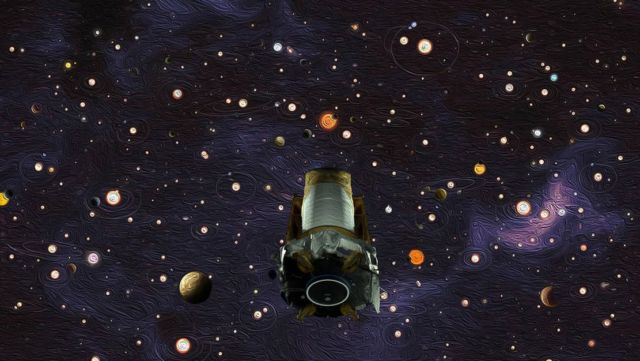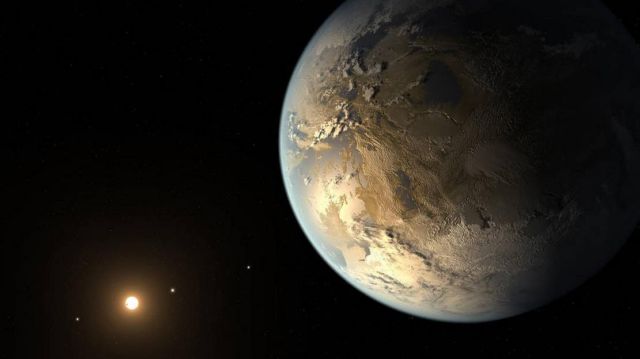Scientists using data from the Kepler space telescope, estimated that there could be as many as 300 million potentially habitable planets in our galaxy.
Some exoplanets could even be pretty close, with several likely within 30 light-years of our Sun. The findings will be published in The Astronomical Journal, and research was a collaboration of scientists from NASA, the SETI Institute, and other organizations worldwide.
Above: This illustration depicts Kepler-186f, the first validated Earth-size planet to orbit a distant star in the habitable zone. Credit: NASA Ames/JPL-Caltech/T. Pyle
“This is the first time that all of the pieces have been put together to provide a reliable measurement of the number of potentially habitable planets in the galaxy,” said co-author Jeff Coughlin, an exoplanet researcher at the SETI Institute and Director of Kepler’s Science Office. “This is a key term of the Drake Equation, used to estimate the number of communicable civilizations — we’re one step closer on the long road to finding out if we’re alone in the cosmos.”
The Drake Equation is a probabilistic argument that details the factors to consider when estimating the potential number of technologically advanced civilizations in the galaxy that could be detected. The Drake Equation is also often considered to be a roadmap for astrobiology and guides much of the research at the SETI Institute.
 An illustration representing the legacy of NASA’s Kepler space telescope. After nine years in deep space collecting data that revealed our night sky to be filled with billions of hidden planets – more planets even than stars – NASA’s Kepler space telescope ran out of fuel needed for further science operations in 2018. Credit: NASA/Ames Research Center/W. Stenzel/D. Rutter. Source: A New View of Our Starry Night
An illustration representing the legacy of NASA’s Kepler space telescope. After nine years in deep space collecting data that revealed our night sky to be filled with billions of hidden planets – more planets even than stars – NASA’s Kepler space telescope ran out of fuel needed for further science operations in 2018. Credit: NASA/Ames Research Center/W. Stenzel/D. Rutter. Source: A New View of Our Starry Night
To develop a reasonable estimate, the researchers looked at exoplanets similar in size to Earth and thus most likely to be rocky planets. They also looked at so-called Sun-like stars, around the same age as our Sun and approximately the same temperature. Another consideration for habitability is whether the planet could have the conditions necessary to support liquid water.
The research was published in the Astronomical Journal
source SETI Institute






Leave A Comment